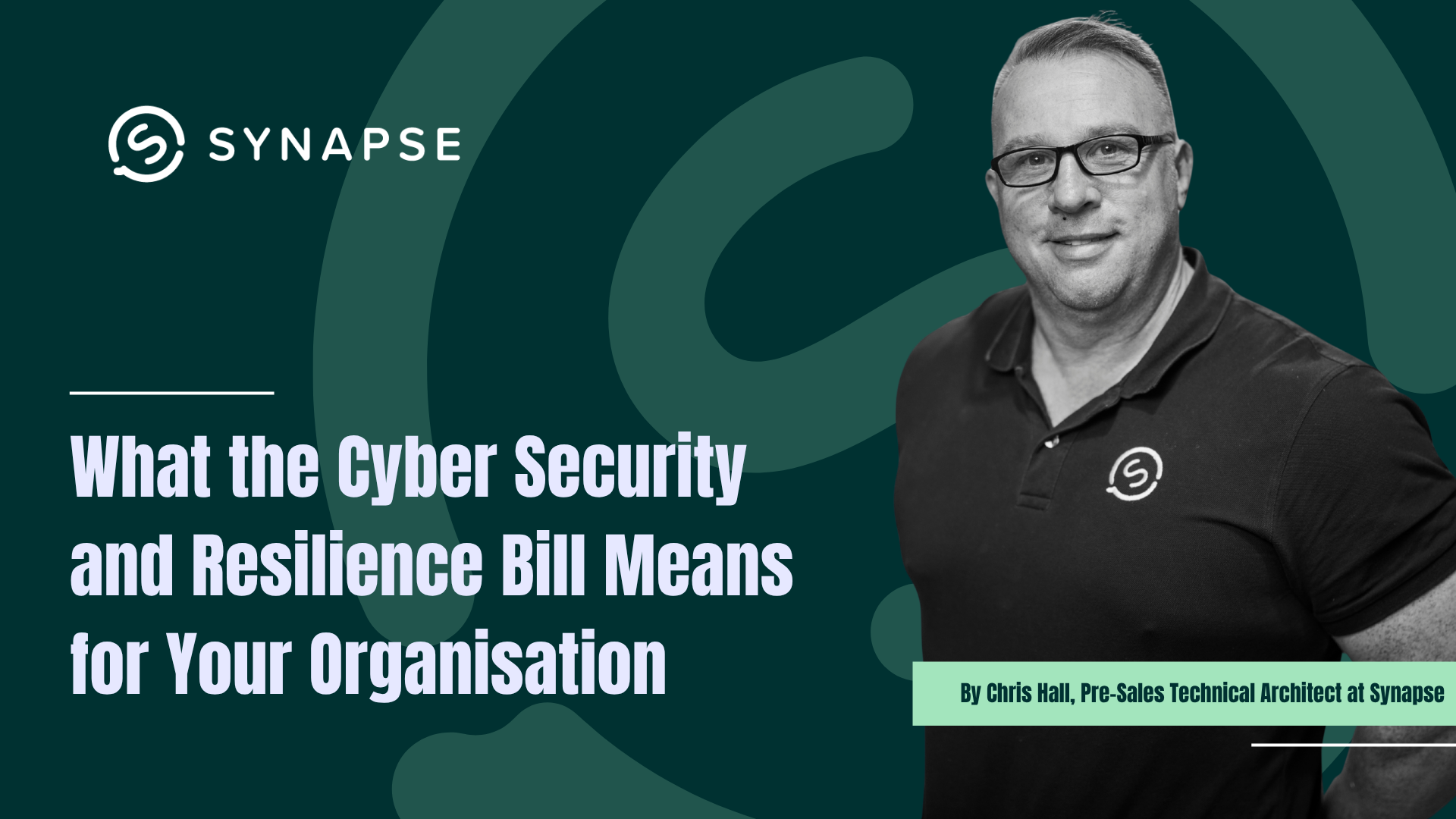
The UK’s Cyber Security and Resilience Bill marks a pivotal moment in how we protect our digital economy. It’s not just another piece of legislation it’s a recognition that cyber risk is now a business issue, not a technical one.
For years, cyber resilience has relied on voluntary frameworks such as Cyber Essentials, ISO 27001 and the NIS Regulations. These offered guidance, but real enforcement was rare. Many organisations only strengthened defences after an incident.
This Bill changes that. It extends the Government’s reach, placing new legal responsibilities on digital service providers, managed service partners, and critical suppliers.
In short, best practice is becoming baseline.
Accountability in a Connected World
One of the most significant changes is the expansion of who falls under regulation. Previously, only “operators of essential services” — utilities, healthcare, transport — had defined duties under NIS.
The new Bill broadens that definition to include:
• Managed Service Providers (MSPs) who handle essential I.T functions, data protection or backup.
• Data centres and infrastructure operators that underpin digital connectivity.
• Suppliers to regulated organisations, who will now need to meet similar standards of resilience.
It’s a logical step. In a connected economy, a breach in one supplier can ripple through hundreds of partners. The Government is saying, clearly, that every link in the chain must be strong.
Regulation with Real Consequences
This time, there are sharper teeth. Regulators will have the power to:
• Impose daily fines of up to £100,000 for persistent non-compliance.
• Demand independent audits of cyber governance.
• Enforce faster reporting of incidents.
• Expand scope quickly as new threats emerge.
That means cyber compliance will soon be as fundamental as data protection or financial regulation. Boards, not just I.T teams, will need to understand their exposure and demonstrate governance.
Cyber resilience has become a shared executive responsibility.
Why Resilience Is Becoming a Business Asset
Regulation doesn’t just change how we manage risk — it reshapes commercial value.
Under this Bill, the cost of not being resilient will outweigh the investment needed to build resilience. Downtime, fines, and reputational damage are now financial risks, not theoretical ones.
Insurers are tightening cyber-cover requirements. Procurement teams are demanding evidence of controls. Clients want assurance that their partners are not the weak link.
That means resilience is no longer simply protection — it’s proof. Proof that you can deliver, recover, and remain trusted.
Managing Risk Across the Supply Chain
Perhaps the most transformative part of the Bill is its emphasis on supply-chain accountability.
If you outsource, you must now prove that your partners maintain robust security. If you’re an MSP or cloud provider, you’ll need to demonstrate your own compliance and resilience capabilities.
Contracts will evolve to include:
• Evidence of cyber standards such as ISO 27001 or Cyber Essentials Plus.
• Right-to-audit clauses for clients.
• Defined timeframes for breach reporting.
• Proof of tested backup and recovery procedures.
This will require closer collaboration between procurement, risk and I.T. Resilience will become something that’s designed into every partnership, not assumed.
Turning Regulation into Advantage
Change always creates opportunity. The organisations that thrive under the new Bill will be those that move early — embedding resilience into operations before regulation demands it.
For service providers, this is a chance to differentiate. Demonstrating strong cyber governance can unlock higher-value contracts and regulated markets.
For end-user organisations, it strengthens reputation and builds customer confidence.
At Synapse, we see this shift daily. Clients investing in Cyber Protection-as-a-Service, Backup-as-a-Service, and Disaster Recovery-as-a-Service don’t just reduce downtime — they gain credibility.
Resilience is now a measure of maturity.
Staying Ready for Constant Change
Another critical aspect of the Bill is its dynamic nature. It allows the Government to adjust scope and standards without passing entirely new legislation.
That means the rules can, and will, evolve. Sectors not currently in scope could be added. Baseline expectations could rise.
For I.T leaders, readiness becomes continuous.
• Review your resilience posture regularly.
• Keep pace with NCSC guidance.
• Build flexibility into contracts and service models.
• Treat compliance as an ongoing capability, not a project.
The strongest organisations will treat adaptation as a core skill.
The Synapse Perspective
At Synapse, we’ve always believed that compliance and innovation are two sides of the same coin.
The Cyber Security and Resilience Bill reinforce what we stand for: that technology should empower, not impede, and that reliable systems drive business confidence.
Through our Adaptive Cloud, Cyber Protection-as-a-Service, and Disaster Recovery-as-a-Service solutions, we help organisations turn complexity into calm — ensuring your I.T systems are secure, recoverable and compliant by design.
Regulation isn’t something to fear. It’s a framework for doing things properly.
Bringing It All Together
The cyber landscape is evolving, and this Bill is a sign of things to come.
For I.T teams, it’s a challenge but also a moment to lead. By preparing now, you can strengthen your organisation’s resilience, reduce exposure, and build trust where it matters most.
Because in the new era of accountability, those who prepare will protect — and those who protect will prosper.
Turn compliance into confidence.
Discover how Synapse’s Adaptive Cloud and Cyber Protection-as-a-Service help you stay secure, compliant and ready for change.
Blog & Articles
Posts



.png)